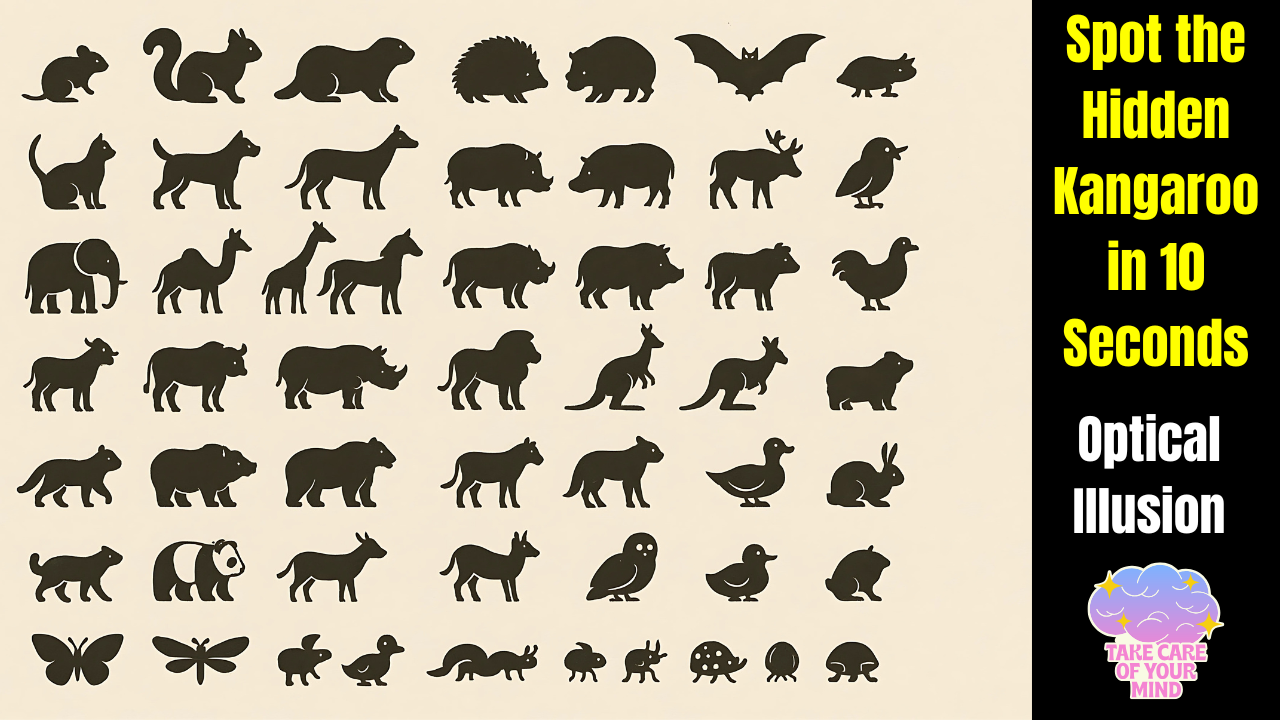Optical illusions have captivated minds for centuries, challenging our perception and revealing just how easily our brains can be tricked. In the digital age, these visual puzzles have found a new audience online, with images and challenges going viral across social media platforms. The latest sensation sweeping the internet is the “Spot the Hidden Kangaroo in 10 Seconds” optical illusion—a test of keen observation and quick thinking. This article dives deep into the world of optical illusions, explores the science behind them, and offers tips to master the viral kangaroo challenge.
What Is an Optical Illusion?
An optical illusion is an image or scene that deceives the eye, resulting in a perception that differs from objective reality. These illusions exploit the way our brains interpret visual information, often leading to confusion or surprise. They come in various forms, including ambiguous images, impossible objects, and hidden figures.
Why Are Optical Illusions Popular?
Optical illusions are not just entertaining; they also serve as powerful tools for cognitive development. Solving these puzzles can:
-
Boost observational skills: By training the brain to notice details and patterns.
-
Enhance problem-solving abilities: As you learn to approach problems from different angles.
-
Promote creative thinking: By challenging conventional ways of seeing the world.
These benefits, combined with the fun and challenge they offer, make optical illusions a favorite pastime for people of all ages.
Did you find Hidden Kangaroo in 10 Seconds
The Viral Kangaroo Challenge
How the Challenge Works
The “Spot the Hidden Kangaroo in 10 Seconds” optical illusion presents viewers with a complex image featuring multiple elements—most notably, several kangaroos. Somewhere within this scene, a hidden kangaroo (or, in some versions, another object like a football) is concealed, blending seamlessly with the environment. The goal is to find the hidden figure within the tight time limit, testing both your visual acuity and your ability to focus under pressure.
Why Is It So Difficult?
The challenge is intentionally designed to be tricky. The hidden kangaroo is camouflaged within the background, using similar colors, shapes, or patterns to avoid detection. This forces the viewer to scan the image carefully, paying attention to small details and subtle differences. The time constraint adds an extra layer of difficulty, making the challenge even more engaging.
Tips to Spot the Hidden Kangaroo
Here are some strategies to help you succeed in the viral kangaroo challenge:
-
Scan the Image Systematically: Start from one corner and move methodically across the image to avoid missing any areas.
-
Look for Anomalies: Pay attention to shapes or colors that stand out or seem out of place.
-
Use Peripheral Vision: Sometimes, the hidden figure is easier to spot with your peripheral vision rather than staring directly.
-
Take Breaks: If you’re stuck, take a short break and return with fresh eyes.
-
Practice with Other Illusions: Regularly solving similar puzzles can sharpen your observational skills.
Optical Illusion Answer

The Science Behind Optical Illusions
Optical illusions work by exploiting the brain’s tendency to make assumptions based on past experiences. When presented with incomplete or ambiguous information, the brain fills in the gaps, sometimes leading to errors in perception. This phenomenon is known as “perceptual filling-in.”
Types of Optical Illusions
-
Ambiguous Images: Pictures that can be interpreted in multiple ways.
-
Hidden Figures: Images where objects or animals are concealed within the scene.
-
Impossible Objects: Drawings that defy the laws of physics or geometry.
These illusions are not just fun—they also provide valuable insights into how our brains process visual information.
Benefits of Solving Optical Illusions
Engaging with optical illusions offers several cognitive and psychological benefits:
-
Improved Attention to Detail: Regularly solving visual puzzles trains your brain to notice subtle differences and patterns.
-
Enhanced Memory: Remembering where you’ve seen hidden figures can improve your visual memory.
-
Stress Relief: Focusing on a puzzle can be a relaxing way to unwind and take a break from daily stressors.
-
Increased Creativity: Seeing things from new perspectives can foster creative thinking.
How to Create Your Own Optical Illusion
If you’re inspired by the viral kangaroo challenge, why not create your own optical illusion? Here’s a simple guide:
-
Choose a Theme: Decide on a central figure or object to hide.
-
Design the Background: Create a scene that will camouflage your hidden figure.
-
Hide the Figure: Place your chosen object within the scene, using similar colors and patterns.
-
Test Your Illusion: Share it with friends or family to see if they can spot the hidden figure.
Creating your own illusions can be a fun and rewarding activity for all ages11.
Frequently Asked Questions (FAQs)
1. What makes the kangaroo so hard to spot in the illusion?
The kangaroo is hidden using colors and patterns that blend into the background, making it difficult to distinguish from its surroundings.
2. How can I improve my ability to solve optical illusions?
Practice regularly with different types of illusions, pay attention to details, and try scanning images systematically.
3. Why are optical illusions good for the brain?
They help improve observation, problem-solving, and creative thinking skills by challenging the way you perceive visual information.
The “Spot the Hidden Kangaroo in 10 Seconds” optical illusion is more than just a viral trend—it’s a fascinating glimpse into how our brains interpret the world around us. By challenging our perception and encouraging us to look beyond the obvious, these puzzles offer both entertainment and cognitive benefits. Whether you’re a casual solver or a puzzle enthusiast, optical illusions provide endless opportunities for fun and mental growth.

